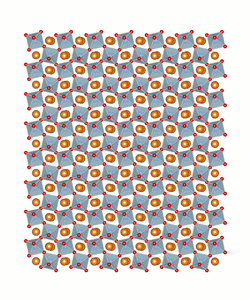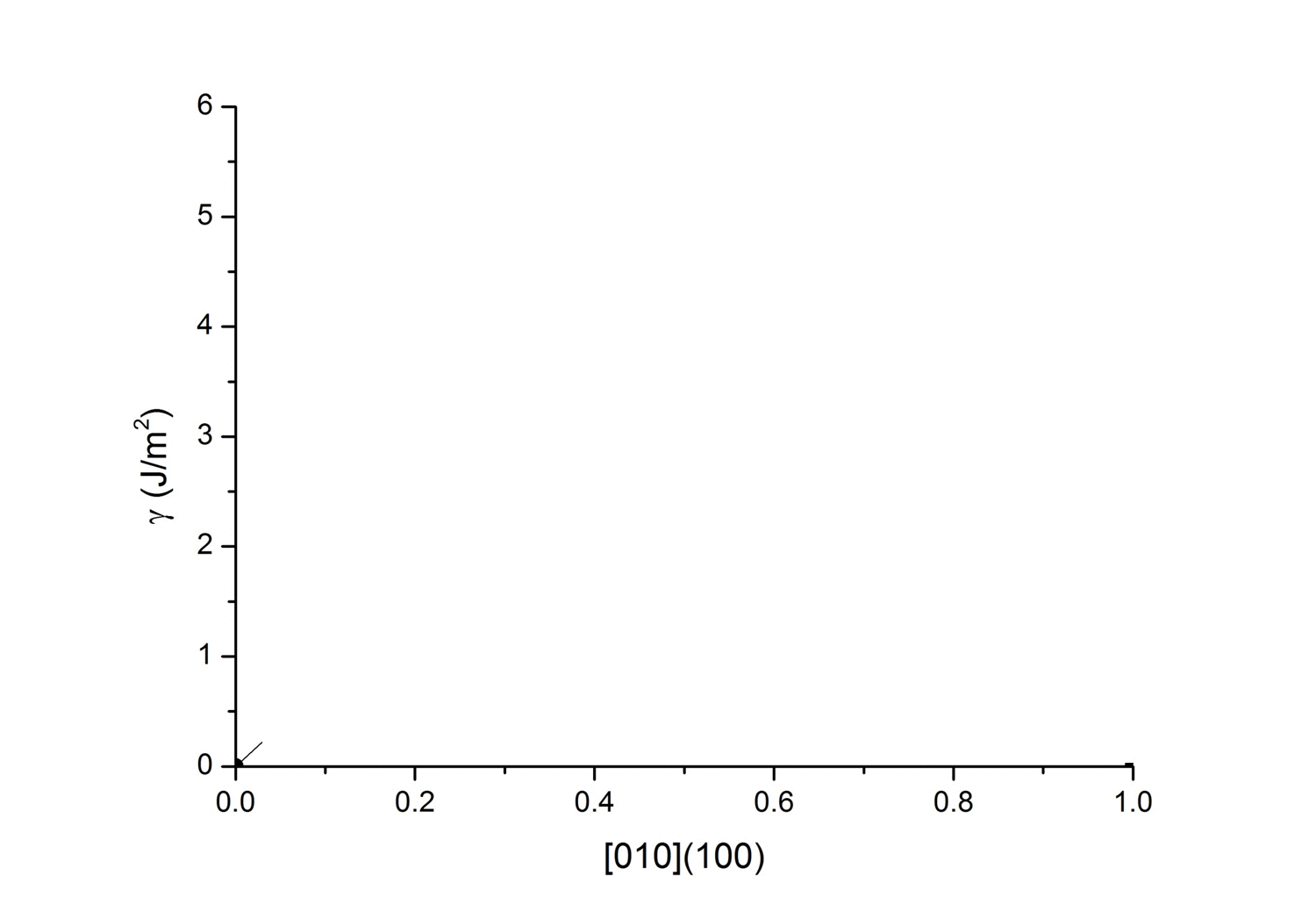RheoMan: a five-year, ERC-funded (Advanced Grant), project to model the rheology of the Earth's mantle
Jun 27, 2013 Shearing MgSiO3 perovskite Results
Plastic deformation of crystals involves shear along some particular directions and planes in the structure. Their identification is extremely important to constrain plastic anisotropy of a given mineral. Generalized Stacking Fault calculations are calculated to evaluate the easier shear planes in the MgSiO3 perovksite at different pressures
(Mg, Fe, Al)(Si, Al)O3 perovskite
is the most abundant mineral of the Earth’s lower mantle (i.e. between 700 and 2900 km depth) and accounts for approximately half of Earth’s mass. Here we focus on its purely magnesian end-member MgSiO3 (or Mg-pv). At pressures of the lower mantle (25-135 GPa) MgSiO3 crystallizes in an orthorhombic structure (with the Pbnm space group). In this structure, SiO6 octahedra are tilted (compared to the ideal perovskite structure of CaTiO3 ) with tilt angles increasing with increasing pressure.

Plastic deformation of crystals
is achieved by plastic shear along some crystallographic planes.

Identifyning the easiest shear planes and shear direction is thus of primary importantce.
The concept of a generalized stacking fault
(or gamma-surface) was introduced in the 1960's by Vitek on bcc metals [1]. The misfit energy across a shear plane is derived by displacing the two half of a crystal of a given quantity in that plane and then by allowing atoms to relax normal to the shear plane. The process is then repeated so as to cover any shear direction in a given plane. For each energy obtained during a displacement, we remove the energy of the crystal without displacement. The energy difference is finally divided by the surface of the plane. Then the entire energy surface is generated. The example is 2D (displacements along one direction only in a given plane) for easiest visualisation, the result is a gamma-line along [010] in (100).
|
Supercell and successive steps for gamma-line calculation. A rigid body shear is applied (at 30 GPa here) on Mg-Pv along [010] and in (100). |
Corresponding gamma- line along [010] in (100), at 30 GPa. |
Gamma-surfaces of MgSiO3 perovskite
are calculated by atomistic potential calculations. The latters are performed using Buckingham [2] pairwise potentials as implemented in the LAMMPS code. We present here the gamma-surfaces for (100), (010), (001), (110), (101) and (011) obtained at 30 GPa.
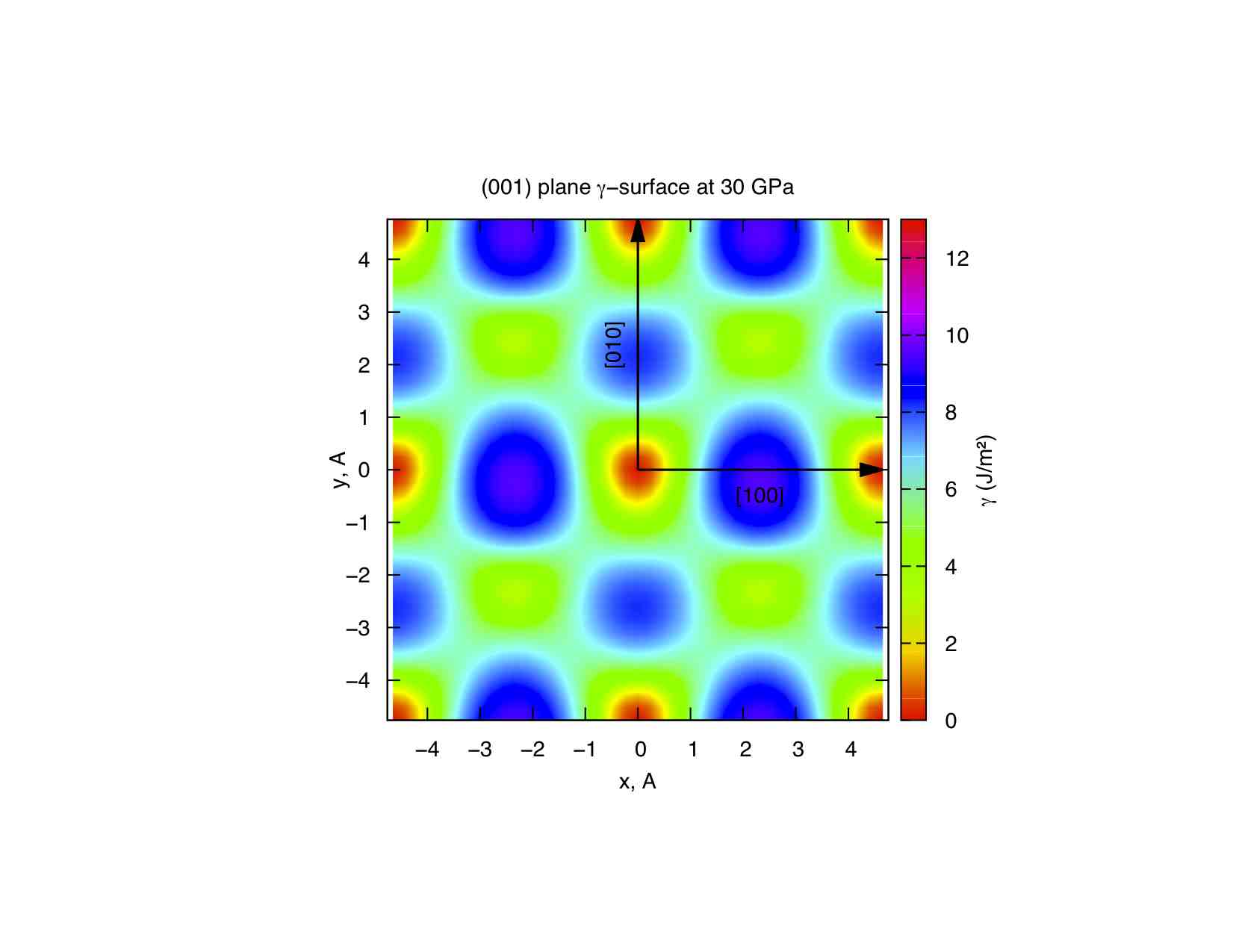
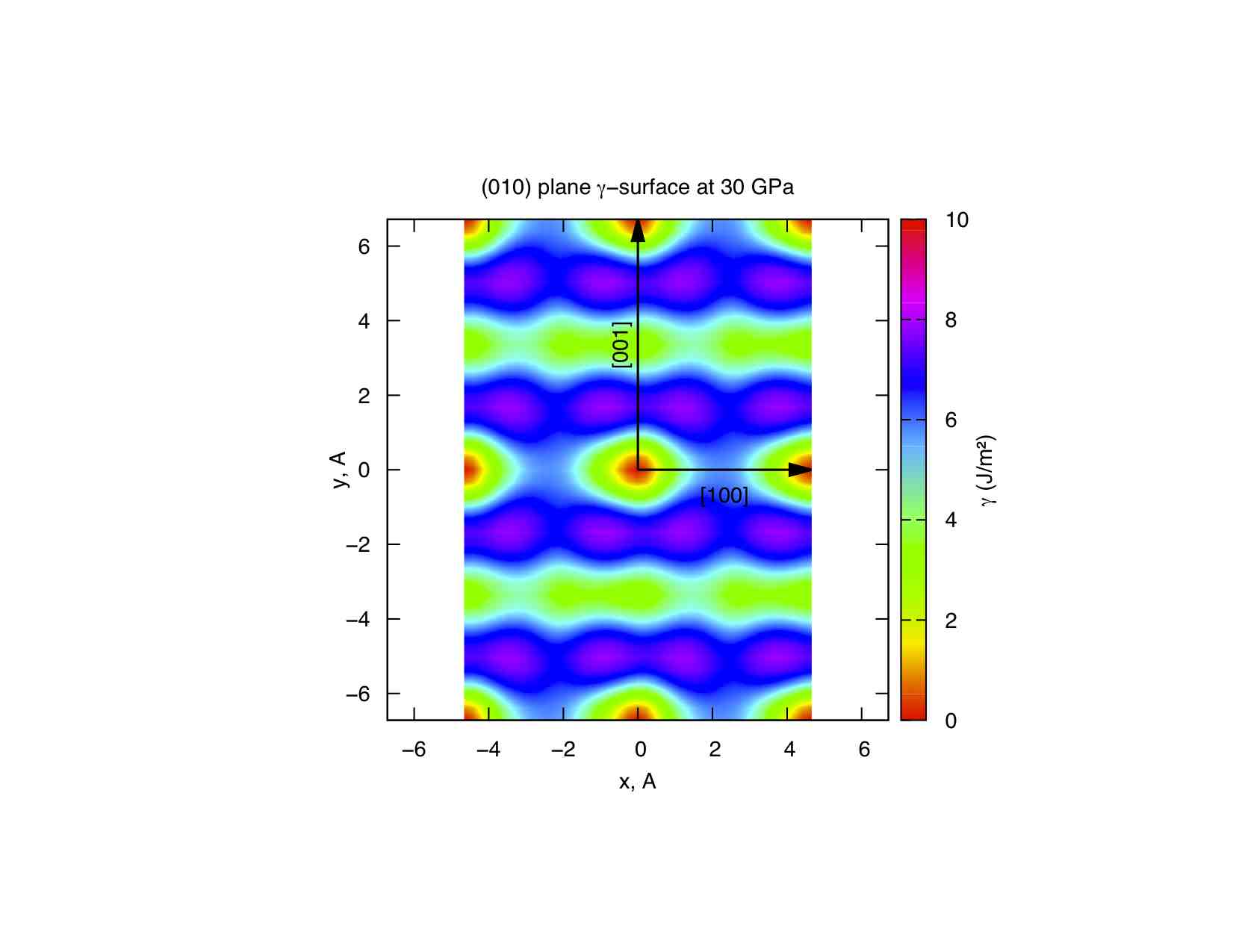
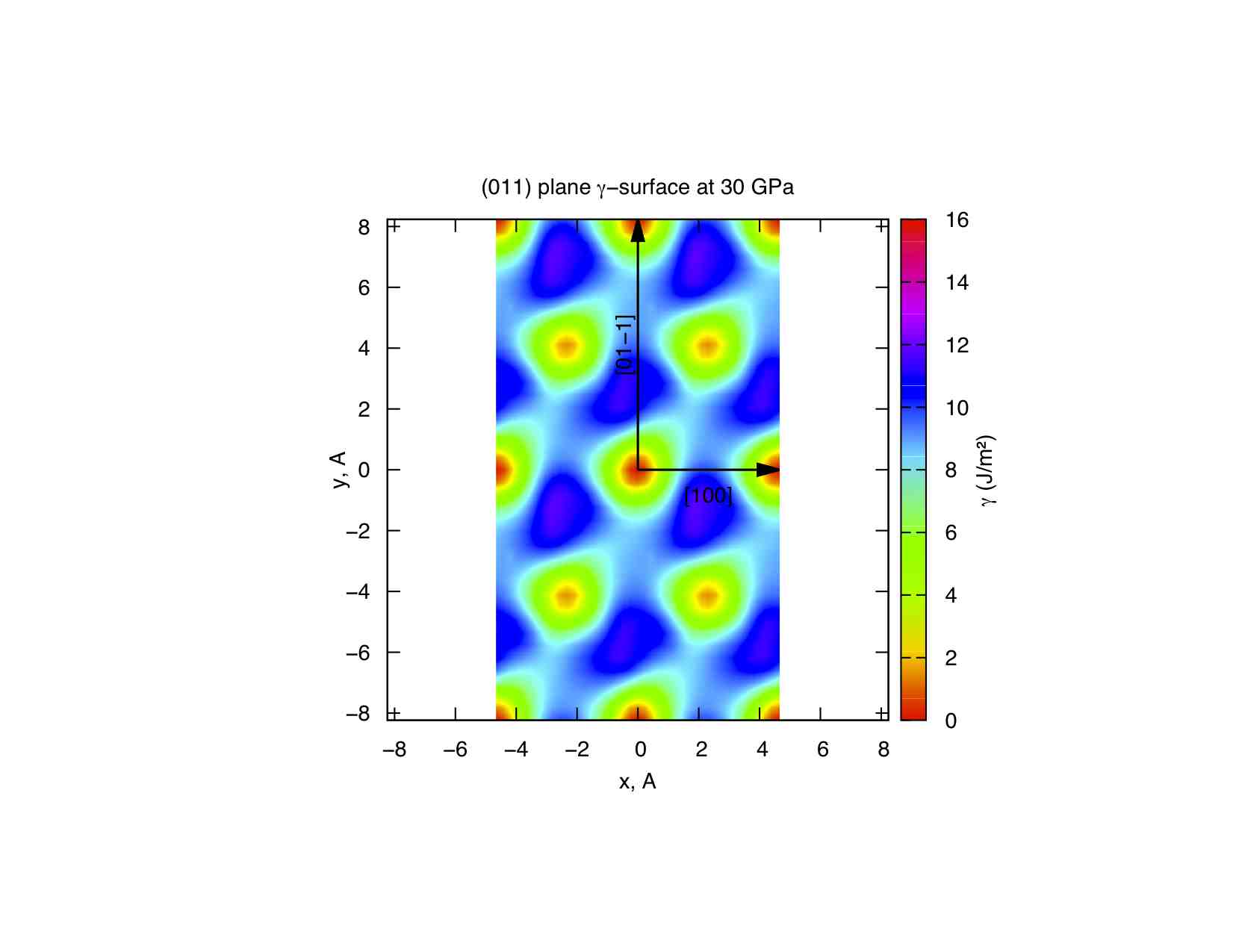
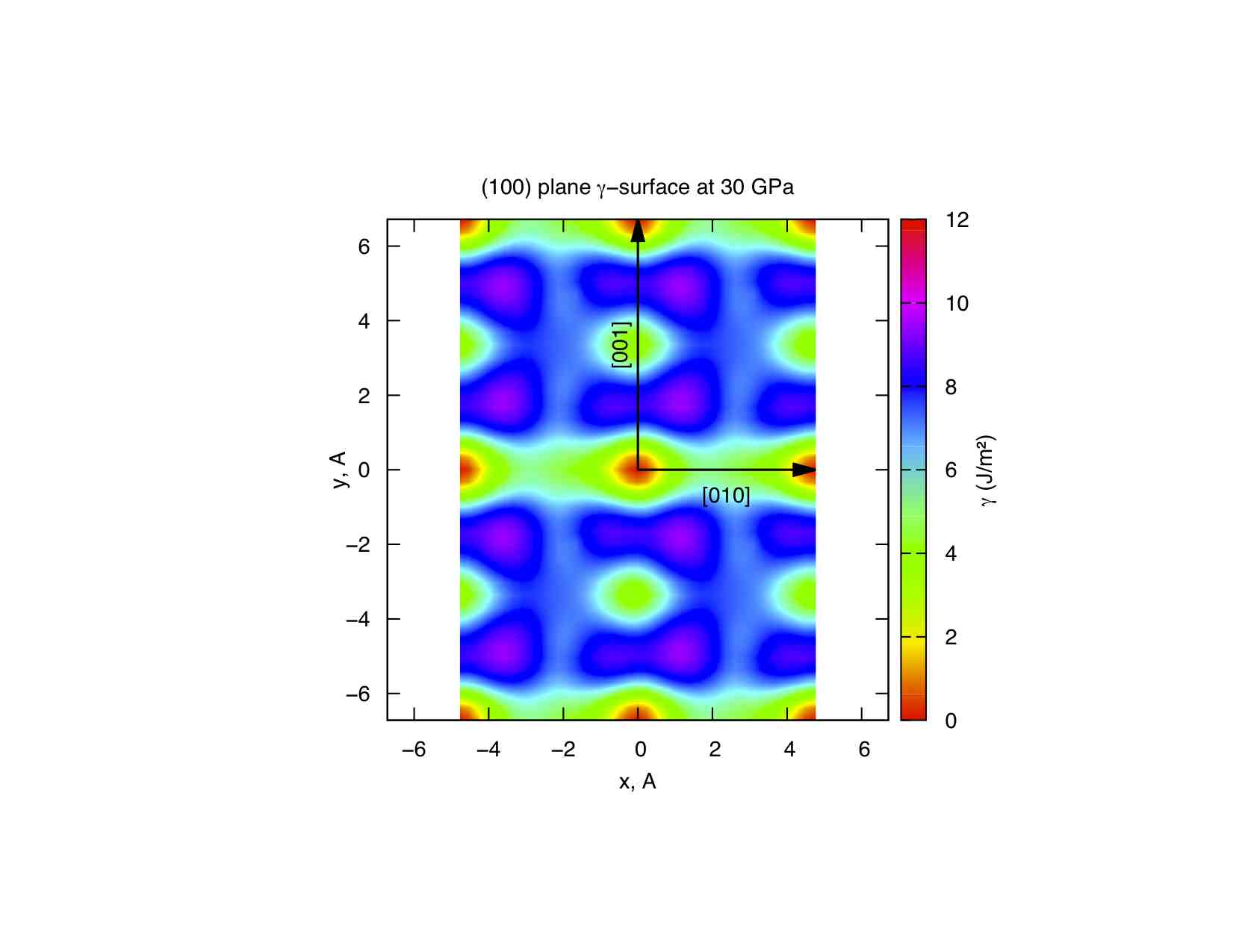
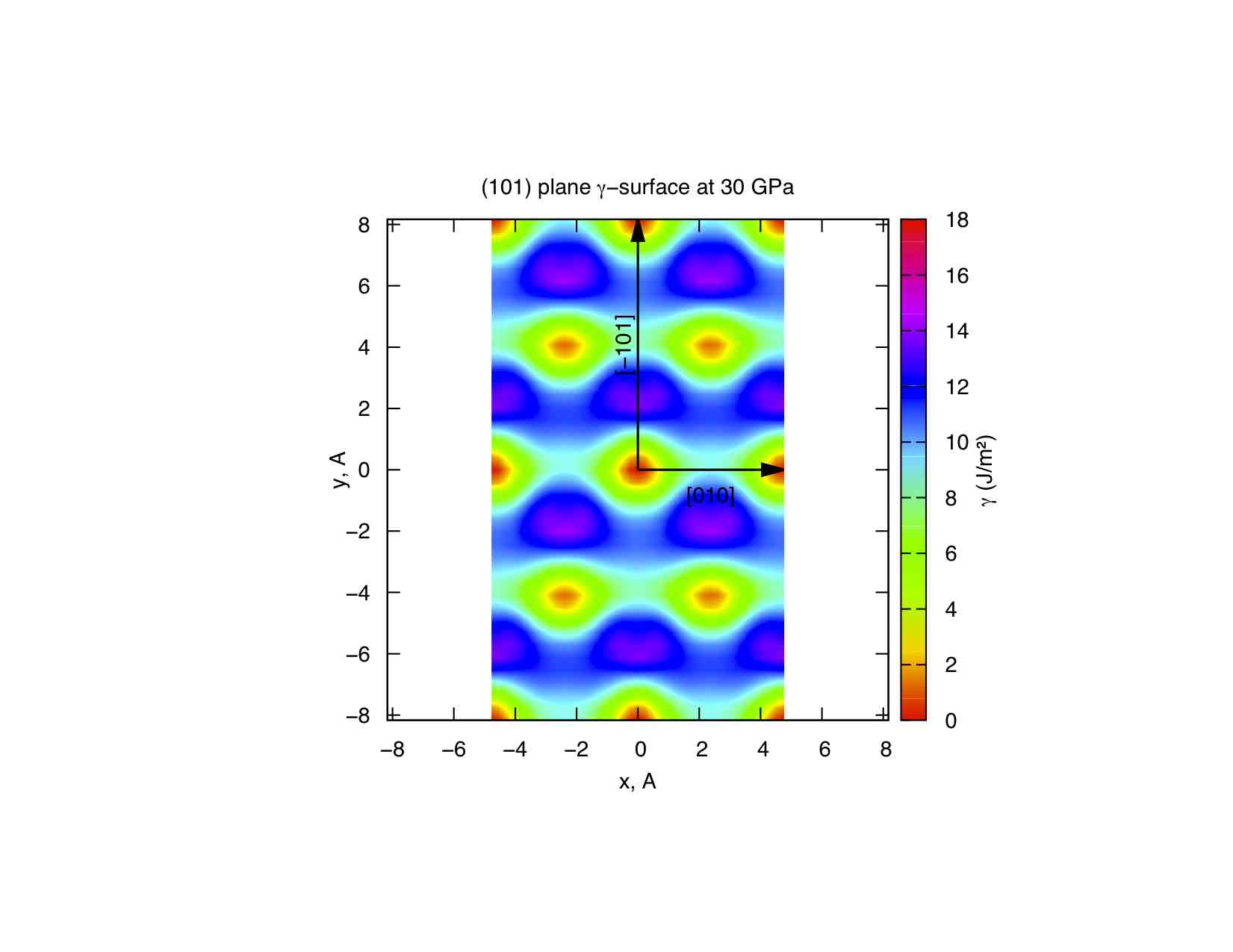
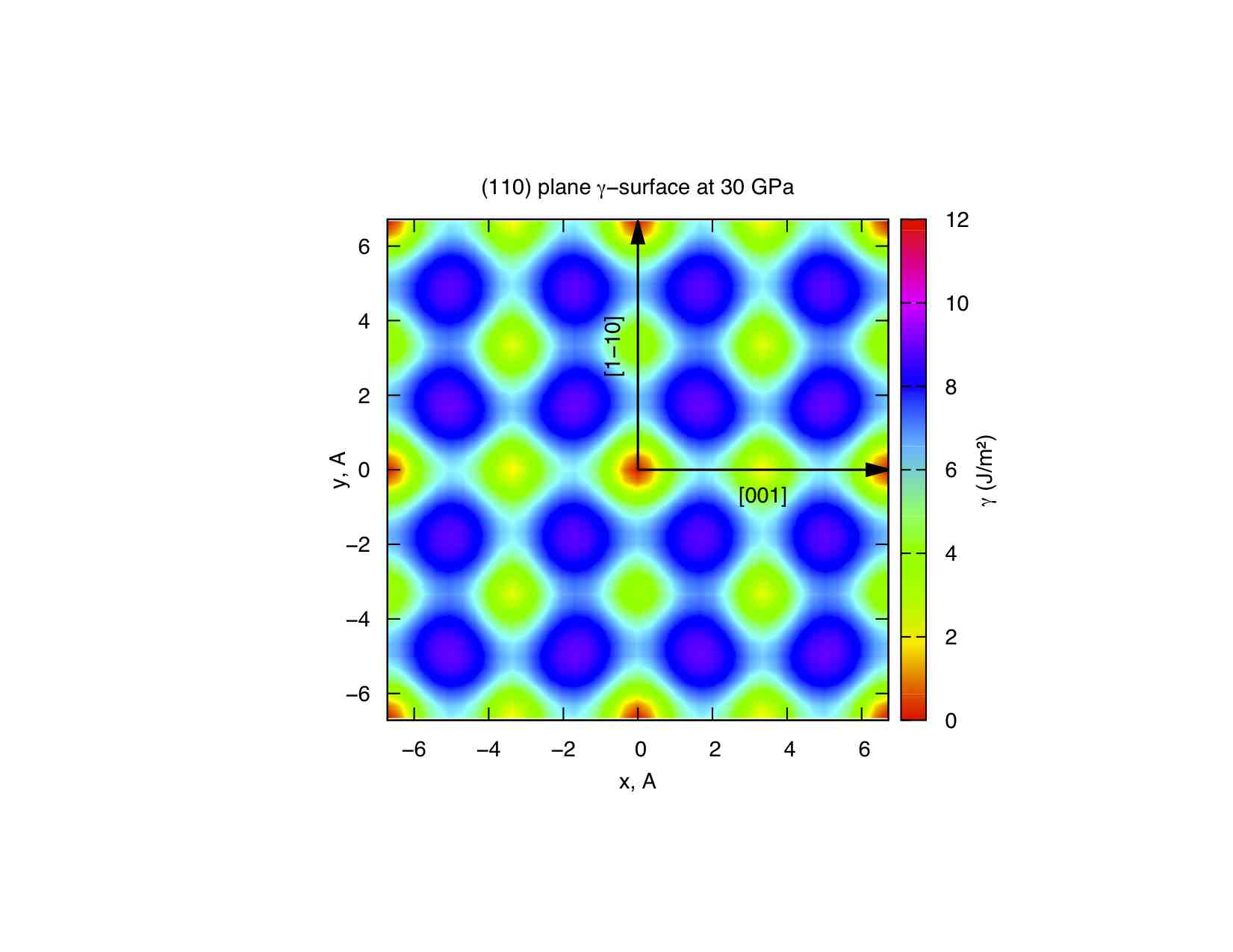
[1]V. Vitek, Phil. Mag., 18 (1968), pp. 773–786
[2] A. R. Oganov, J. P. Brodholt and G. D. Price, Physics of the Earth and Planetary Interiors 122 (200) p. 277


